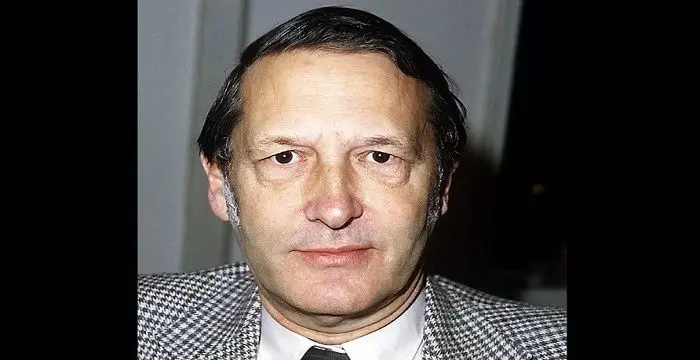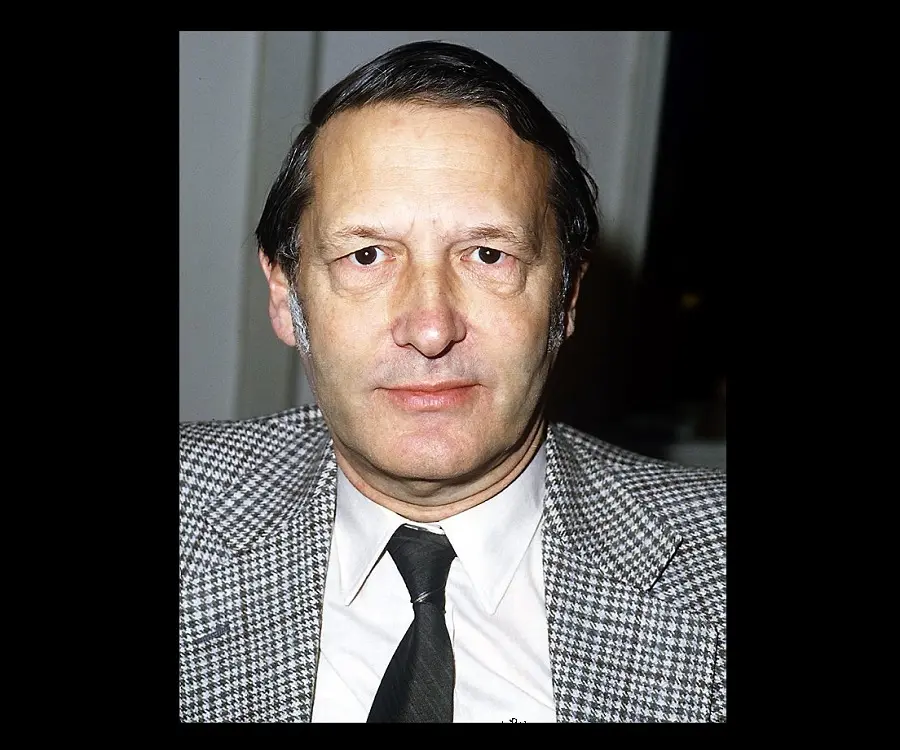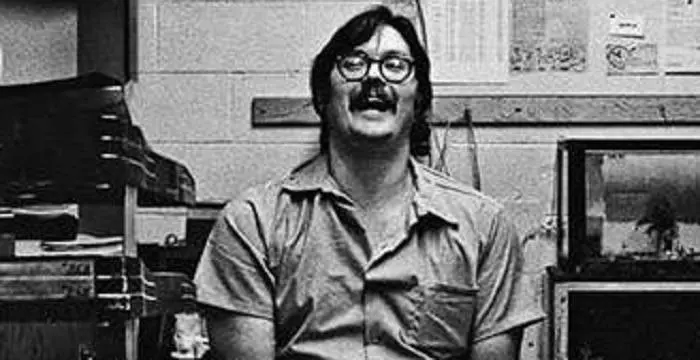
Simon van der Meer - Scientists, Career and Facts
Simon van der Meer's Personal Details
Simon van der Meer was a Dutch physicist who made revolutionary contributions to the field of particle physics
| Information | Detail |
|---|---|
| Birthday | November 24, 1925 |
| Died on | March 4, 2011 |
| Nationality | Dutch |
| Famous | Scientists, Physicists |
| Universities |
|
| Birth Place | The Hague |
| Gender | Male |
| Sun Sign | Sagittarius |
| Born in | The Hague |
| Famous as | Physicist |
| Died at Age | 85 |
// Famous Scientists
Juliane Koepcke
Juliane Koepcke is a German-Peruvian biologist, who was the lone survivor among the 92 passengers and crew of the ill-fated LANSA Flight 508 that crashed in the Peruvian rainforest on 24 December 1971. Know more about her life in this biography.
Henry Cavendish
Henry Cavendish was a theoretical chemist and physicist, renowned for discovery of hydrogen and calculation of the mass of earth. To know more about his childhood, profile, timeline and career read on
Konstantin Tsiolkovsky
Konstantin Tsiolkovsky was a Russian rocket scientist and a pioneer of astronautics. This biography provides detailed information about his childhood, family, personal life, career, achievements, etc.
Simon van der Meer's photo
Who is Simon van der Meer?
Simon van der Meer was a Dutch physicist who made revolutionary contributions to the field of particle physics. He was responsible for the discovery of two of the fundamental building blocks of matter, W and Z bosons for which he received the Nobel Prize in Physics. Hailing from a family of teachers, van der Meer was raised in an intellectually stimulating environment where the emphasis was on providing good education to the children. Though he was well-educated, he considered it restrictive and regretted not having a more intensive training in physics. He later attributed his “amateur” learning to allow him to see complicated things in a simple and clear manner. He completed his degree in physical engineering from the Delft University of Technology and worked for Philips Research for a few years. He eventually became a physicist at CERN and worked on many studies and experiments, particularly the stochastic cooling technique, that is used in various machines even today. Another one of his noteworthy contributions to CERN was his work on the regulation and control of power supplies for the Intersecting Storage Rings (ISR). Despite all his successes and the international acclaim that followed, van der Meer was known to be a humble and introspective person completely devoted to his wife and family.
// Famous Physicists
Henry Cavendish
Henry Cavendish was a theoretical chemist and physicist, renowned for discovery of hydrogen and calculation of the mass of earth. To know more about his childhood, profile, timeline and career read on
Walter Kohn
Nobel Laureate Walter Kohn was an Austrian-born American theoretical chemist and physicist. Check out this biography to know about his childhood, life, achievements, works & timeline.
Nikola Tesla
Nikola Tesla was a Serbian-American inventor, best known for his development of alternating current electrical systems. This biography of Nikola Tesla provides detailed information about his childhood, life, achievements, works & timeline.
Childhood & Early Life
Simon van der Meer was born on November 24, 1925, in The Hague, the Netherlands was the third child of Pieter van der Meer and Jetske Groeneveld. His father was a teacher and his mother’s family was in the teaching profession as well.
His parents were a constant source of encouragement and made considerable sacrifices to give him and his three sisters a quality education.
He was enrolled in the science section of the Gymnasium in The Hague and graduated in 1943. During the German occupation of the Netherlands, Dutch universities were closed and therefore, he continued attending the humanities section of the Gymnasium for the next two years.
A growing interest in Physics and technology had him assisting his physics teacher, U.Ph. Lely, with the preparation of numerous demonstrations. He loved electronics and filled his house with various gadgets.
In 1945, he enrolled at the “University of Technology”, Delft choosing to study Technical Physics. He graduated with an engineering degree in 1952.
Career
Soon after his graduation in 1952, Van der Meer worked in the “Philips Research Laboratory” at Eindhoven. His job mainly involved developmental work on high-voltage equipment and electronics for electron microscopes.
The recently founded “European Organization for Nuclear Research, CERN” (ConseilEuropéen pour la RechercheNucléaire) laboratory in Geneva caught his fancy and he joined the organization in 1956. He remained active at CERN until his retirement in 1990.
His first task at CERN was under the leadership of J.B. Adams and C.A. Ramm. It concerned the design of the pole-face windings and multipole correction lenses for the 26 GeV Proton Synchrotron (PS).
For a year, in 1960, he worked on a separated antiproton beam which triggered the idea of the magnetic horn. This was a pulsed focusing device necessary for long-base-line neutrino facilities. This device has numerous applications in neutrino physics and the production of antiprotons.
In 1965, he joined a small group of physicists, led by F.J.M. Farley, working on the second “g-2” experiment for the precision measurement of the magnetic moment of the muon. Van der Meer designed a small storage ring (the g-2 ring) and was a participant throughout the experiment.
From 1967 to 1976, he was responsible for the “Intersecting Storage Rings” (ISR) and the “400 GeV Super Proton Synchrotron” (SPS). He was in charge of regulation and control of their magnet power supplies.
Sometime during 1976, as his work with SPS power supplies had come to an end, he joined a study group that was involved in the pp project. This project was helmed by Carlo Rubbia and proposed the use of the SPS or the Fermilab ring as a pp collider. He was also part of an experimental team that was studying cooling in a small ring called the Initial Cooling Experiment (ICE).
On approval of the collider project in 1978, he was chosen to be the joint project lead with R. Billinge. Their responsibilities included the construction of the “Antiproton Accumulator” (AA).
Two years later, in 1980, the first antiproton accumulator started up as was the circulation of the first beam. Over a year later, about 1011 particles had been achieved.
His stochastic cooling technique was used to accumulate intense beams of antiprotons for head-on collision with counter-rotating proton beams at 540 GeV centre-of-mass energy or 270 GeV per beam in the Super Proton Synchrotron (SPS). The first sign of “W” and “Z” bosons was detected in 1983 by the “UA1 experiment”.
The discovery of the W and Z particles, two of the most fundamental constituents of matter, earned him a Nobel Prize in 1984. He was the co-recipient of the award along with Carlo Rubbia.
His work led to the discovery of the ‘top quark’, the final piece of matter in the ‘Standard Mode’, in 1994. The method of stochastic cooling was added to the ‘Tevatron collider’ to enable this. The stochastic extraction method proposed by him is used in the ‘Low-Energy Antiproton Ring’ (LEAR) that was succeeded by the ‘Antiproton Decelerator’ (AD) to decelerate and store antiprotons.
After more than 30 years at CERN and a significant contribution to the world of Physics, Simon van der Meer retired in 1990. Instead of indulging in lecture tours, he chose to devote his time to gardening and catching up with friends.
Major Works
The technique of stochastic cooling of particle beams was invented by Van der Meer. His technique proved that antimatter beams could be concentrated with sufficient strength to collide proton and antiproton beams in the “Super Proton Synchrotron” that led to the discovery of “W” and “Z” particles. Though they were theoretically predicted earlier, their discovery was a significant breakthrough in particle physics.
Awards & Achievements
In 1982, Simon van der Meer was honored with the ‘Duddell Medal and Prize’ for his contributions in the world of Physics.
Van der Meer was responsible for the discovery of W and Z particles, two of the most fundamental constituents of matter. This was crucial to the unified ‘electroweak theory’ that was put forward in the 1970s. In 1984, he, along with Carlo Rubbia, was awarded the “Nobel Prize in Physics”.
Personal Life & Legacy
In 1966, on a skiing trip with his friends in the Swiss Alps, Simon van der Meer met his future wife-to-be, Catharina M. Koopman. A short interval after their meeting, they married. He described this decision as the best he ever made.
He had two children; a daughter, Esther, in 1968, and a son, Mathijs in 1970.
He passed away on March 4, 2011, in Geneva, Switzerland at the age of 85.
Trivia
Van der Meer is one of only two accelerator physicists to have won the Nobel Prize. The other recipient was Ernest Lawrence who had won it in 1939.
An asteroid, 9678 van der Meer, is named in his honor.
// Famous Dutch peoples
Nikkie De Jager
Check out all that you wanted to know about Nikkie De Jager, the famous Dutch Makeup artist; her birthday, her family and personal life, her boyfriends, fun trivia facts and more.
Romee Strijd
Romee Strijd is a Dutch model, also known as a 'Victoria's Secret Angel.' Check out this biography to know about her family, personal life, including her age, birthday, etc.
Nisrina Sbia
Nisrina Sbia is a social media influencer and model who rose to fame and has made it big on Instagram. Check out this biography to know about her birthday, childhood, family life, achievements and fun facts about her.
Simon van der Meer's awards
| Year | Name | Award |
|---|---|---|
Other | ||
| 0 | Nobel Prize in Physics | |
Simon van der Meer biography timelines
- // 1011 To 1980Two years later, in 1980, the first antiproton accumulator started up as was the circulation of the first beam. Over a year later, about 1011 particles had been achieved.
- // 24th Nov 1925Simon van der Meer was born on November 24, 1925, in The Hague, the Netherlands was the third child of Pieter van der Meer and Jetske Groeneveld. His father was a teacher and his mother’s family was in the teaching profession as well.
- // 1939Van der Meer is one of only two accelerator physicists to have won the Nobel Prize. The other recipient was Ernest Lawrence who had won it in 1939.
- // 1943He was enrolled in the science section of the Gymnasium in The Hague and graduated in 1943. During the German occupation of the Netherlands, Dutch universities were closed and therefore, he continued attending the humanities section of the Gymnasium for the next two years.
- // 1945 To 1952In 1945, he enrolled at the “University of Technology”, Delft choosing to study Technical Physics. He graduated with an engineering degree in 1952.
- // 1952Soon after his graduation in 1952, Van der Meer worked in the “Philips Research Laboratory” at Eindhoven. His job mainly involved developmental work on high-voltage equipment and electronics for electron microscopes.
- // 1956 To 1990The recently founded “European Organization for Nuclear Research, CERN” (ConseilEuropéen pour la RechercheNucléaire) laboratory in Geneva caught his fancy and he joined the organization in 1956. He remained active at CERN until his retirement in 1990.
- // 1960For a year, in 1960, he worked on a separated antiproton beam which triggered the idea of the magnetic horn. This was a pulsed focusing device necessary for long-base-line neutrino facilities. This device has numerous applications in neutrino physics and the production of antiprotons.
- // 1965In 1965, he joined a small group of physicists, led by F.J.M. Farley, working on the second “g-2” experiment for the precision measurement of the magnetic moment of the muon. Van der Meer designed a small storage ring (the g-2 ring) and was a participant throughout the experiment.
- // 1966In 1966, on a skiing trip with his friends in the Swiss Alps, Simon van der Meer met his future wife-to-be, Catharina M. Koopman. A short interval after their meeting, they married. He described this decision as the best he ever made.
- // 1967 To 1976From 1967 to 1976, he was responsible for the “Intersecting Storage Rings” (ISR) and the “400 GeV Super Proton Synchrotron” (SPS). He was in charge of regulation and control of their magnet power supplies.
- // 1968 To 1970He had two children; a daughter, Esther, in 1968, and a son, Mathijs in 1970.
- // 1976Sometime during 1976, as his work with SPS power supplies had come to an end, he joined a study group that was involved in the pp project. This project was helmed by Carlo Rubbia and proposed the use of the SPS or the Fermilab ring as a pp collider. He was also part of an experimental team that was studying cooling in a small ring called the Initial Cooling Experiment (ICE).
- // 1978On approval of the collider project in 1978, he was chosen to be the joint project lead with R. Billinge. Their responsibilities included the construction of the “Antiproton Accumulator” (AA).
- // 1982In 1982, Simon van der Meer was honored with the ‘Duddell Medal and Prize’ for his contributions in the world of Physics.
- // 1983His stochastic cooling technique was used to accumulate intense beams of antiprotons for head-on collision with counter-rotating proton beams at 540 GeV centre-of-mass energy or 270 GeV per beam in the Super Proton Synchrotron (SPS). The first sign of “W” and “Z” bosons was detected in 1983 by the “UA1 experiment”.
- // 1984The discovery of the W and Z particles, two of the most fundamental constituents of matter, earned him a Nobel Prize in 1984. He was the co-recipient of the award along with Carlo Rubbia.
- // 1984Van der Meer was responsible for the discovery of W and Z particles, two of the most fundamental constituents of matter. This was crucial to the unified ‘electroweak theory’ that was put forward in the 1970s. In 1984, he, along with Carlo Rubbia, was awarded the “Nobel Prize in Physics”.
- // 1990After more than 30 years at CERN and a significant contribution to the world of Physics, Simon van der Meer retired in 1990. Instead of indulging in lecture tours, he chose to devote his time to gardening and catching up with friends.
- // 1994His work led to the discovery of the ‘top quark’, the final piece of matter in the ‘Standard Mode’, in 1994. The method of stochastic cooling was added to the ‘Tevatron collider’ to enable this. The stochastic extraction method proposed by him is used in the ‘Low-Energy Antiproton Ring’ (LEAR) that was succeeded by the ‘Antiproton Decelerator’ (AD) to decelerate and store antiprotons.
- // 4th Mar 2011He passed away on March 4, 2011, in Geneva, Switzerland at the age of 85.
// Famous Sagittarius Celebrities peoples
Billie Eilish
Billie Eilish Pirate Baird O’Connell is an American singer and songwriter. Check out this biography to know about her childhood, family, personal life, birthday, etc.
Jacelyn Reeves
Jacelyn Reeves is a former flight attendant who once had a fling with Clint Eastwood. Check out this biography to know about her birthday, childhood, family life, achievements and fun facts about her.
Edmund Kemper
Edmund Kemper is a convicted serial killer from America who murdered ten people. Check out this biography to know about his childhood, life, crimes and other facts about him.
Pietro Boselli
Pietro Boselli is an Italian model, engineer, teacher, and fitness athlete who became famous as the ‘world’s sexiest math teacher’. Check out this biography to know about his birthday, childhood, family life, achievements and fun facts about him.
Niqoles Heard
Lil Niqo is an American rapper and musical artist. Let’s take a look at his family and personal life including age, date of birth, net worth, girlfriends, and fun facts.
Ted Nugent
Ted Nugent is a hard rock musician known for his hits ‘Stranglehold’ and ‘Cat Scratch Fever’. This biography of Ted Nugent provides detailed information about his childhood, life, achievements, works & timeline.
Simon van der Meer's FAQ
What is Simon van der Meer birthday?
Simon van der Meer was born at 1925-11-24
When was Simon van der Meer died?
Simon van der Meer was died at 2011-03-04
Where was Simon van der Meer died?
Simon van der Meer was died in Geneva
Which age was Simon van der Meer died?
Simon van der Meer was died at age 85
Where is Simon van der Meer's birth place?
Simon van der Meer was born in The Hague
What is Simon van der Meer nationalities?
Simon van der Meer's nationalities is Dutch
What was Simon van der Meer universities?
Simon van der Meer studied at Delft University of Technology
What is Simon van der Meer's sun sign?
Simon van der Meer is Sagittarius
How famous is Simon van der Meer?
Simon van der Meer is famouse as Physicist














